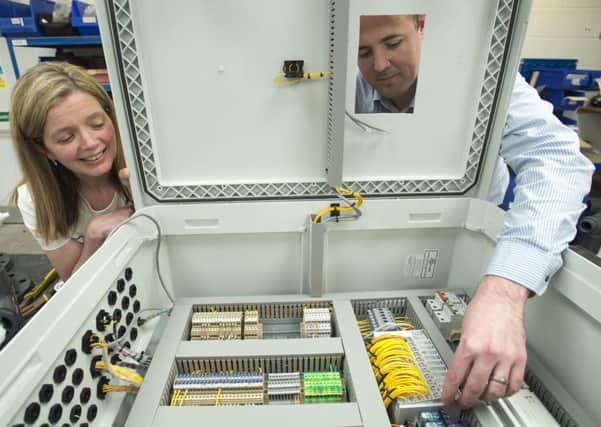When business meets academia a new world of great ideas can emerge


It reminds me of the unusual solutions which can arise out of business-academic collaborations matched by Interface – almost three-quarters of businesses we work with are partnered with university disciplines outwith their own industry sector.
A great example of this is Lightbody of Hamilton, a celebration cake maker which was looking at gaining a deeper understanding of what happens to their cakes over time in order to further develop products and processes. Working with Interface, Lightbody were introduced to hyperspectral imaging, a technology up until this point mainly used in the security and pharmaceutical industries. This out of the box thinking has delivered a series of collaborative projects between the company and the University of Strathclyde on the composition and structure of the cake sponge.
Advertisement
Hide AdAdvertisement
Hide AdI often cite the ambition of a remote Highlands and Islands museum which Interface helped link to academics, which has led to an impressive increase in visitor numbers. Timespan in Sutherland had a significant rise in visitors over two years following its tie-up with the University of St Andrews to produce the first 3D virtual world using historical content. The reconstruction of a settlement from 1813 enhanced the visitor experience along with the museum’s reputation and profile.
There are 23 universities and research institutions across Scotland, five of which have recently been ranked in the world’s top 200 universities. That’s a lot of world-class expertise, but where do you start in finding a potential partner to support research and development?
Interface has a strong track record of matching businesses to academics with an overall aim of enabling companies to be more competitive in national or global markets. In monetary terms, firms supported by Interface add an estimated £70 million into the economy each year via new services, processes or products, or efficiencies leading to cost savings.
Innovation can lead to transformation within an industry sector, not only on an individual business basis but also groups of businesses working together in collaboration.
The Resource Efficiency Industry Advisory Group for Food & Drink is a fantastic example of a multi- business group in action. A feasibility study helped one of its members save £600,000 a year on energy costs and the research data from the project, with Edinburgh Napier University, was shared amongst the wider group to better inform their own processes.
We are adept at spotting opportunities– if we see a number of similar business challenges arising in a sector, we can work with those clusters of businesses or organisations, defining the issue and introducing them to potential academic expertise.
By working together, groups of companies can share best practice and partner on projects of scale with a broad range of academics, and access funding that encourages new ways of collaborating. For the academics the benefits are also numerous, from stimulating new research themes with an applied industry focus to providing insights into business and opening up opportunities to collaborate with other academics outwith their field of expertise.
This is a particularly exciting time for me, as Head of Sector Relationships, as we focus on encouraging multi-party collaborative projects in key sectors as a result of £250,000 Scottish Government funding. We are working closely with key partners, including Scotland Food & Drink, the Scottish Tourism Alliance and Creative Scotland, together with the enterprise agencies, to understand and articulate the challenges and opportunities; develop a culture of innovation and, where appropriate, bring in academic expertise to provide solutions through knowledge and research.
Advertisement
Hide AdAdvertisement
Hide AdWe have really seen this multi-party approach pay off with food and drink companies and envisage the same for Tourism and Creative Industries. For example, we are in early talks with a group of event and festival organisers looking for academic research support to find ways in which they can enhance the visitor experience and ensure the medium-to-long term sustainability of commercial events. We have also identified cross sectoral opportunities to build both food and music tourism. In the food and drink sector we are introducing researchers from a range of academic disciplines to a primary producer and their supply chain in order to tackle some of the challenges they currently face in what is a fast-changing market and regulatory environment.
There may not be a demand for pea and ham from a chicken, but there is a smorgasbord of academic expertise across 23 Scottish Higher Education Institutions which we can put you in touch with.
Suzanne Dawson, Head of Sector Relationships at Interface, www.interface-online.org.uk